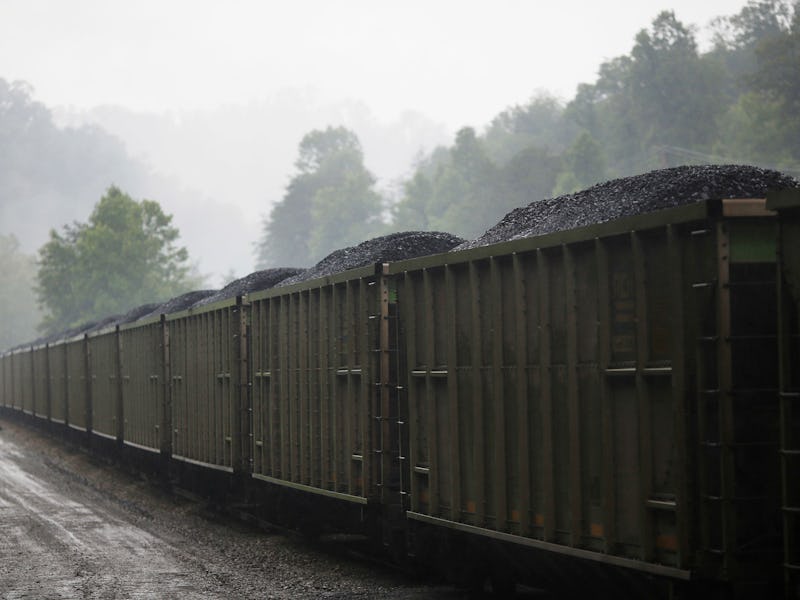CO2 Concentrations Won't Dip Below the 400 PPM Climate Change Benchmark Again
Not in your lifetime anyway.

Until very recently, atmospheric concentrations of carbon dioxide below 400 parts per million were all you had ever known. They were all this planet had known for millions of years. But those days are gone, and they’re not coming back any time soon according to a new study published in Nature Climate Change.
The benchmark of 400 ppm is arbitrary, but worth noting because it represents a huge increase over what the planet has seen in millions of years. For the past 800,000 years, excluding the past century, the level of carbon dioxide in the atmosphere has varied between 180 and 280 parts per million. Then humans figured out how to burn fossil fuels for energy, and CO2 levels took off from there. Some researchers have suggested that 350 ppm is a “safe” level for the humans, plants, and animals that have adapted to life on this planet as we know it.
What’s most shocking is how quickly the planet has gone from one where 400 ppm is unheard of, to one where levels below 400 won’t be seen again for the foreseeable future. There were some instances of readings over 400 ppm in 2012 and 2013, but the first time the planet sustained readings over 400 for a full month was barely a year ago, in March 2015.
Global CO2 concentrations go up and down seasonally, but on average they are increasing at an increasing rate.
The CO2 concentrations in the atmosphere cycle up and down every year with the seasons, as great northern forests suck up large quantities of carbon in the spring and summer. But the overall upward trend is clear, and the gap between being seasonally above 400 ppm and permanently — almost nonexistent.
Thanks to a particularly strong El Niño, researchers believe we won’t dip back below 400 ppm for a very, very long time. The problem is, once CO2 gets into the atmosphere, it can stay there for centuries or even millennia. The major way it comes out of the atmosphere is by being dissolved into the oceans, which has its own consequences for the health of the planet. So even though human emissions have flattened out, the carbon dioxide in the atmosphere continues to grow at an increasing rate. Reversing the trend will take dramatic decreases in fossil fuel burning, and probably negative emission technologies like carbon capture and storage, too.
The consequences of global climate change may be dramatic and irreversible, or they may be incremental. Either way, it’s time to start saying your goodbyes to Planet Earth as you once knew it.
Maybe say your first goodbye to your cousins the Bramble Cay melomys, a rat-like rodent that is the first confirmed mammal to go extinct because of climate change. This species of melomys lived exclusively on Bramble Cay, a tiny coral island off the northern coast of Australia. Rising sea and storm surges inundated the cay with salty water often enough to kill off the vegetation the little guys depended on for food. The floods may have also drowned the melomys in large numbers. Researchers surveyed the island in 2014, and found no evidence of survivors.